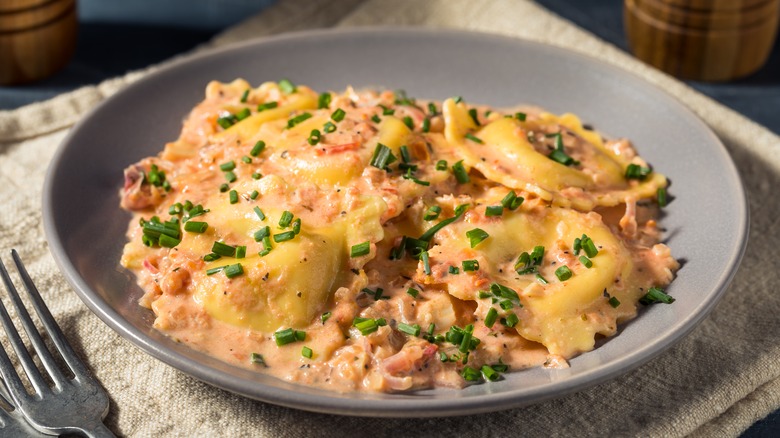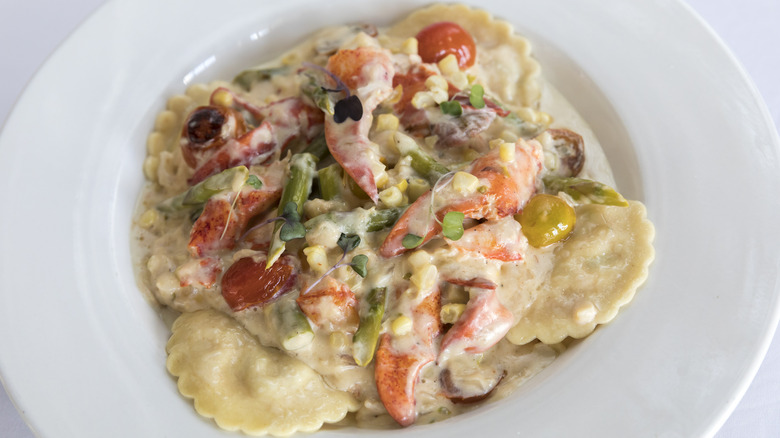How To Ensure Lobster Steals The Spotlight When Stuffed In Ravioli
The potential fillings for homemade ravioli don't need to be limited to simply spinach or mushrooms and cheese. The options are endless, but one arguably stands above the rest. Adding lobster to ravioli will always transform the dish. Lobster ravioli is extravagance in a bite — the decadent lobster meets rich ricotta, creating a luscious meal that never gets old.
Whether you pair lobster ravioli with a creamy white wine sauce or classic tomato sauce, the main ingredient should always shine through. Lobster has a sweet, rich taste that deserves to get the spotlight. To avoid the crustacean from getting overshadowed, start out by sparingly using other ingredients when stuffing the ravioli.
While the ricotta is standard for the ravioli, be intentional about how you season the lobster so you don't distract from its naturally fresh flavor. Add a small amount of ricotta, along with lemon zest, salt, pepper, and thyme to make a lobster-forward filling.
Tips on making the perfect lobster ravioli
Making ravioli from scratch can be a lengthy, tedious process, but it's not as difficult as it may seem. The focus of the ravioli is the filling, not the shell. When rolling the dough out, it should be thin enough to be slightly transparent.
The texture of your filling is equally as important. It shouldn't be too wet or dry — the perfect filling is smooth and creamy, like ricotta. While a wet filling makes the ravioli too sticky, making it difficult to seal. Refrigerate it for a few hours to make it harder. Meanwhile, you can sprinkle a little water onto the dry filling to get a creamier texture.
When cooking the ravioli, don't leave it in the pot for too long, or else it may fall apart or open up and leak. Once the pasta is added to boiling water, it doesn't need to stay in there longer than six minutes. A good rule of thumb is that once the ravioli has floated to the top, it's ready to be removed.

